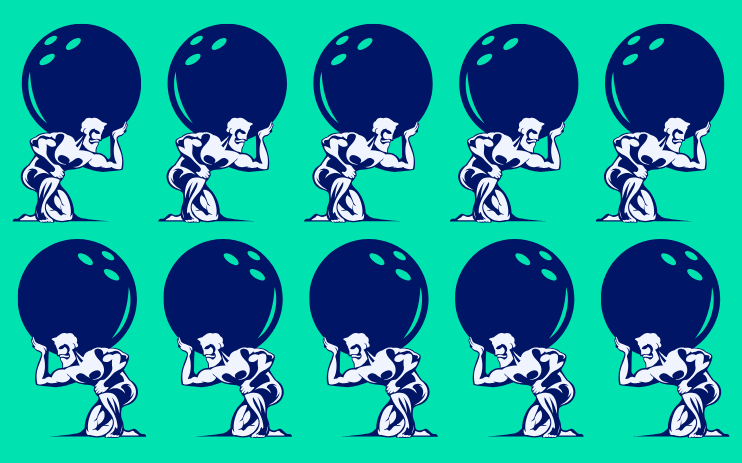When AI does the task but misses the process
AI can write, summarize, and analyze faster than ever. But speed alone doesn’t change how work gets done.

AI can write, summarize, and analyze faster than ever. But speed alone doesn’t change how work gets done.
Across enterprises, many AI tools perform tasks correctly but fail to understand the process they belong to. They send the email but don’t know why it matters. They extract the data but don’t know what comes next. That’s why it’s important to know the difference between task automation and workflow integration.
One measures how efficiently a tool performs a step. The other determines whether it can move with the flow of work. Recognizing this difference helps teams set realistic expectations for AI and assess performance accurately, based on process impact, not just activity.
According to MIT’s “State of AI in Business 2025”, 80% of companies have tested general-purpose AI tools like ChatGPT or Copilot, and about 60% have also tested embedded or task-specific GenAI inside business systems.

Generic AI tools excel at tasks but struggle with workflows. They shine in clearly defined, isolated activities but fall short when facing complex, evolving processes that require context, data integration, and adaptive responses.
Because these tools lack persistent memory and learning over time, they need full context every time, which is limiting scalability and value once real operations start.
When it comes to scaling, the picture changes fast:
This steep drop from pilots to production has a lot to do with how these AI solutions fit into enterprise workflows.
That’s why users often feel AI is “one more step,” not part of the flow.
If you’ve ever seen an AI assistant generate a supplier email or summarize an order confirmation, you’ve seen automation at work. It’s quick, impressive and short-lived.
The next day, it doesn’t remember the supplier’s reply or know the next approval step. It has no concept of your organization’s exceptions, rules, or dependencies. You need to take over.
That’s where most enterprise AI stops: it completes a task but doesn’t continue the process.
AI systems that integrate workflows behave differently because they automate AND understand the process around tasks.
For example, when one of our customers gets a supplier confirmation by email, the AI Agent in charge with OCs checks the purchase order, flags inconsistencies, routes the case back to our customer for review, and logs the decision so next time, it knows how to handle a similar issue.
That’s AI that integrates workflows around OCs, i.e. AI that follows the process rather than interrupting it.
MIT calls the space between tools that execute and tools that evolve the learning gap. Companies that close that gap move from pilots to production 2x times as fast as those stuck with static systems (i.e. that don’t learn).
People don’t start from zero every day. They remember what worked, what didn’t, and who to talk to next. They build on yesterday’s experience.
In practical terms, a buyer doesn’t re-learn supplier performance every week. They recall which vendors are reliable, which ones miss deadlines, and which parts usually fail inspection. Or at least they know where to look. They put that information in context and make decisions accordingly.
When you’re working with AI tools that have no capacity for memory for data and workflows, you’re very much like Sisyphus, pushing the same boulder up the same hill, every single day.
In Nordoon’s case, AI Agents retain what they learn, store information and keep track of the state of things, like the status of a purchase order, the progress of an order confirmation, or the outcome of a supplier follow-up. They pick up where yesterday left off.
That’s when they start feeling less like software and more like teammates, that you can easily ask “What’s the state of PO 912920?”. One of our customers described that sense of reliability as “set and forget”.
“The service has been great because we set it and forgot it, and it’s been great! As a Digital Software Lead, that kind of reliability is rare. Being able to implement and walk away – confident it’s running smoothly - has freed us to focus on more strategic, high-impact work.”
Noor Nasser, Digital Software Lead, Cuisine Solutions
You can read more about how Cuisine Solutions used Nordoon AI Agents to automate ESG data capture and scale customer order handling, without disrupting teams or increasing overhead in our latest case study.
Successful AI systems embed learning and contextual adaptation. They combine persistent memory with user feedback and integrate directly with enterprise systems of records like ERP or CRM.
Unlike static tools, these systems grow more capable over time, anticipating needs, coordinating multi-step operations, and reducing manual data entry but only when humans collaborate with them.
People are the guardians of context, the ones who can teach AI what matters and when it matters. And AI Agents learn from the feedback they share along the way. They need supervision to stay on track and equally to improve.
This is what we had in mind when we designed Nordoon AI Agents. We built them to incorporate the domain, to learn how each company’s processes actually work, and become hyperspecialized. They adapt to approval flows, exception patterns, and changing business logic.
Every interaction with humans, every learning gained from a human review adds to a shared Memory, a living knowledge base that grows with use. That's how our Agents move from doing to understanding, from automation to integration.
MIT’s research sums it up well: the barrier to scale is learning. The future belongs to AI that remembers, adapts, and improves with every cycle. When systems understand the workflow, not just the task, they stop being tools and start becoming part of the team.
Subscribe to our newsletter, and we will send AI automation insights like this straight to your inbox on a regular basis.